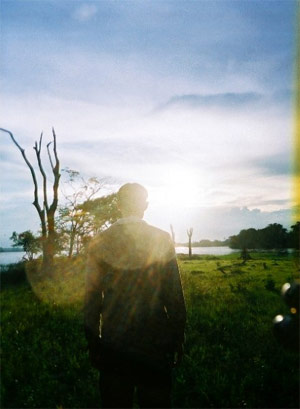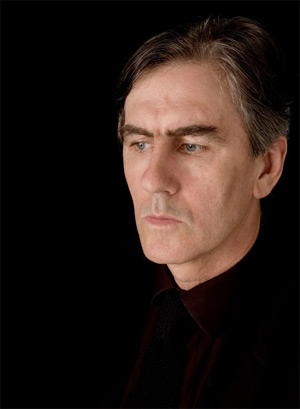Mess+Noise ‘icons’ interview: ‘Lawrence English + ROOM40’, December 2010
An interview for the Mess+Noise ‘icons’ series. Excerpt below.
In an age of disconnect, Lawrence English still believes in the life-affirming power of new sounds. It’s what’s kept his label ROOM40 going for 10 years, writes ANDREW MCMILLEN.
If you’re an experimental sound artist looking to distribute your music internationally, no matter where you’re based, the name Lawrence English is bound to crop up in your research. English [pictured right – kind of] has operated the label ROOM40 out of his home in Brisbane since 2000, or, in his own words, he’s delivered “sound parcels from the antipodes since the turn of the century”. Such is the man’s reputation for courteous professionalism, kindness and amiability among the world’s non-mainstream music community that he could well front a Tourism Queensland campaign for international relations.
“The six degrees separation thing in this particular field, I think, is much less than six. Even your top level guys, your Brian Enos, the degrees of separation, are like two or three at the most,” English says. “One of my very good friends, Ben Frost, is Eno’s current mentee. We put out Ben’s first album. There’s this great flow-on effect. I think the really good thing about this particular area is it is really like an extended family, in the best way possible, not in the kind of squabbling way.”
English’s greatest passion appears to be sharing interesting sounds with others. As far as I can gauge, this is why ROOM40 exists. Every release is a labour of love, carefully choreographed with a selection of artists hand-picked from around the globe. ROOM40’s Australian releases over the years include John Chantler, Chris Abrahams (of The Necks) and Rod Cooper.
“I’m a big believer in that generally in music, there’s enough room for everyone to do their thing and to find an audience. The kind of competitive, closed spaces that sometimes happen with more contemporary music – I just don’t believe in that because I think there’s plenty of room for Big Day Out, for Soundwave, for all these major festivals. I believe in open systems. The cycle of the fringes to the centre and back around again; that’s what keeps it interesting.”
As 2010 marks ROOM40’s 10th anniversary, I dropped into English’s home in Kelvin Grove, a suburb of Brisbane, to discuss its past, present and future.
I’ve read that you consider ROOM40 not just as a label, but a multi-arts organisation, which encompasses the label, distribution, promoting shows – what else?
Festivals, art curation, and art installation. It started as an umbrella so it was like the label publishing editions and all that kind of stuff; the opportunity to bring people to Australia and send Australia overseas, like a kind of cycle thing … We’ve had some great international artists. Christian Marclay was here a few years ago in Melbourne at ACMI [Australian Centre for the Moving Image]. But we are yet to see that celebration of contemporary sound culture or a kind of connective thing – this thing is, for most Australian musicians in this area, their profile is overseas. Someone like Oren Ambarchi, for example, that guy’s touring in every other country. He plays in Australia maybe three times a year or something. He might play 50 shows. The same for me: I played two shows this year and by the end of the year I’ll have played like 30 or 40 something. Ninety percent of them will not be in Australia. It’s just because the opportunities are elsewhere and Australia is just one of a number of countries that you can go to.
For the full interview, visit Mess+Noise. Thanks for being one of the most interesting people I know, Lawrence. For more info on ROOM40, visit their website.


 Icons: Robert Forster
Icons: Robert Forster